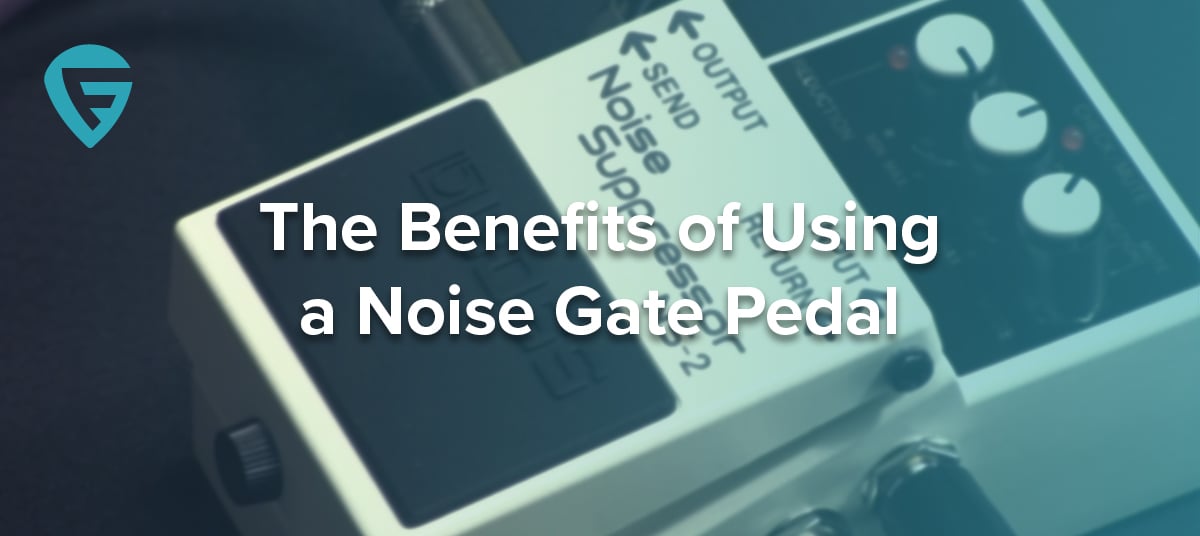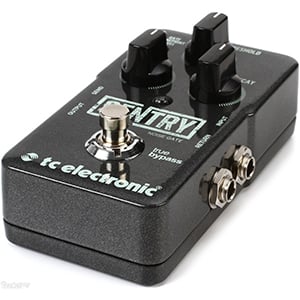- Home
- Instruments
- Gear
- Recording
- Lessons
- Reviews
- Blog

If we assembled a random group of, let's say 1000 guitar players in one venue, and asked for the show of hands for those who use, or have used a noise gate pedal, we would probably see 1/4 of them responds. Now, if we asked that group how many of them had bad experience with noise gate pedals, we would probably see 1/3 of that group raise their hands. That's the best case scenario. Yes, noise gates are relatively basic effects pedals that have rudimentary controls, but that definitely doesn't mean they are easy to use.
On the contrary, it takes a lot of understanding of one's tone in order to utilize a noise gate unit in the most efficient way. Not a lot of people who come into contact with these pedals are capable of doing so right away, which leads to them messing up their tone, and ultimately giving up on this awesome piece of technology. Today we are going to talk about how to properly use a noise gate pedal, and what to avoid. With that said, let's dig right in.
 As we know by now, a noise gate pedal is used to attenuate the hiss or hum that is a byproduct of high gain, noisy pickups, or anything similar. If you want to learn more about this subject, check out our article that goes deeper into that subject ‘What Are Noise Gate Pedals Used For'. Anyways, once set up, the pedal will completely attenuate the signal once it reaches a certain volume level. Naturally, that threshold limit can be adjusted. In order to properly use your noise gate pedal, you have to be able to figure out what is it that you are trying to remove, and whether or not that noise is something this type of pedal is even able to deal with.
As we know by now, a noise gate pedal is used to attenuate the hiss or hum that is a byproduct of high gain, noisy pickups, or anything similar. If you want to learn more about this subject, check out our article that goes deeper into that subject ‘What Are Noise Gate Pedals Used For'. Anyways, once set up, the pedal will completely attenuate the signal once it reaches a certain volume level. Naturally, that threshold limit can be adjusted. In order to properly use your noise gate pedal, you have to be able to figure out what is it that you are trying to remove, and whether or not that noise is something this type of pedal is even able to deal with.
Let's get one thing straight right from the start. The type of hissing sound a noise gate is built to reduce occurs at around 60Hz, and comes from the amp itself. Second type of noise is what is commonly referred to as ‘white noise' and it comes from too much gain being pushed into the amp via overdrive or distortion pedals. So if you hook up a brand new noise gate pedal to your setup, and it does nothing for your tone, maybe it's not the pedal that's the problem. It could be a number of things.
For example, you might be using bad cables, or one of your pedals on the pedalboard is about to crap out. In cases when the noise gate doesn't help, even if its properly setup, you need to go and troubleshoot your entire signal chain, starting from the guitar. This leads us to the next important aspect of properly using a noise gate pedal.
Even though most noise gate pedals have only two relevant knobs at best, that doesn't mean that adjusting them is easy. On the contrary, there's a lot of things to take into consideration when tweaking your noise gate pedal. Even if you have the best noise gate pedal in the world, it won't help you much if you don't know how to use it. First one you need to deal with is Threshold.
This knob sets the cutoff volume level where the pedal will kick in and attenuate everything. Threshold needs to be fine tuned to a point where it kicks in to deal with the noise, but doesn't cut off your soft notes. Dialing in this sweet spot takes time, effort and a lot of troubleshooting. Next is Decay. Decay determines how fast the noise gate kicks in when you reach the selected threshold. If you set a fast Decay, your tone will be clean but very choppy and unnatural.
On the other hand, if you dial in a slow decay, chances are the noise gate won't even work half of the time. It would be awesome if we had a silver bullet formula to give you here, but we don't. That has nothing to do with us, but it has everything to do with the fact that every setup is different. You will have to deal with that on your own. The best way to do this is to play with your standard highest and lowest intensity. Once you figure that out, set the threshold appropriately and then deal with the decay.
Placing your noise gate pedal in the signal chain comes down to two options. If you are not using a delay or a reverb, go for the end of the chain. If you are, place the noise gate before these effects, otherwise it will interfere with their performance. Some also like to put their noise gate after their high gain pedals such as overdrives or distortions. That way the pedal kicks in to deal with the noise produced by these effects when a lot of gain is pushed into the signal.
Figuring out how to a noise gate pedal properly is something that you simply have to dedicate some time to. If you rush it, you won't achieve anything, and will most likely end up disappointed. We have given you some tips today that should help you get your noise gate pedal up and running, but in the end, it's completely up to you.

Patrick Taylor says
People don’t really understand noise gates. Especially “where to put it”. I’m a guitar player and a recording engineer and I’ve been frustrated by the stomp box noise gates. Here’s what I did — I have a studio rack mount noise gate. It’s a dbx 1074 quad gate. It goes between preamp and power amp in my Marshall. The only thing after that is my Lexicon reverb. Now this gate allows the *trigger* to come from somewhere else. I have that coming from a signal splitter at the guitar (Radial SHOTGUN). So the best place is both at the beginning (trigger) and near the end (actual gate). This produces an extremely clean signal and no false triggering. Don’t settle for a stomp box y’all! – PT
Robby Ramdhani says
this is one of the easiest to understand how noise gate works in general. Thanks!